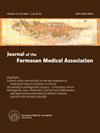Estimating Taiwan's QALY league table for catastrophic illnesses: Providing real-world evidence to integrate prevention with treatment for resources allocation
IF 2.6
3区 医学
Q1 MEDICINE, GENERAL & INTERNAL
引用次数: 0
Abstract
Background/purpose
Curative technologies improve patient's survival and/or quality of life but increase financial burdens. Effective prevention benefits all three. We summarize estimation methods and provide examples of how much money is spent per quality-adjusted life year (QALY) or life year (LY) on treating a catastrophic illness under a lifetime horizon and how many QALYs/LYs and lifetime medical costs (LMC) could be potentially saved by prevention.
Methods
We established cohorts by interlinkages of Taiwan's nation-wide databases including National Health Insurance. We developed methods to estimate lifetime survival functions, which were multiplied with the medical costs and/or quality of life and summed up to estimate LMC, quality-adjusted life expectancy (QALE) and lifetime average cost per QALY/LY for catastrophic illnesses. By comparing with the age-, sex-, and calendar year-matched referents simulated from vital statistics, we obtained the loss-of-QALE and loss-of-life expectancy (LE).
Results
The lifetime cost-effectiveness ratios of ventilator-dependent comatose patients, dialysis, spinal cord injury, major trauma, and cancers were US$ 96,800, 16,200–20,000, 5500–5,900, 3400–3,600, and 2900–11,900 per QALY or LY, respectively. The successful prevention of lung, liver, oral, esophagus, stomach, nasopharynx, or ovary cancer would potentially save US$ 28,000–97,000 and > 10 QALYs; whereas those for end-stage kidney disease, stroke, spinal injury, or major trauma would be US$ 55,000–300,000 and 10–14 QALYs. Loss-of-QALE and loss-of-LE were less confounded indicators for comparing the lifetime health benefits of different technologies estimated from real-world data.
Conclusions
Integration of prevention with treatment for resources allocation seems feasible and would improve equity and efficiency.
估算台湾灾难性疾病的 QALY 排行榜:提供真实世界的证据,将预防与治疗结合起来进行资源分配。
背景/目的:治疗技术提高了患者的生存率和/或生活质量,但也增加了经济负担。有效的预防可使三者受益。我们总结了估算方法,并举例说明在终生范围内治疗灾难性疾病每质量调整生命年(QALY)或生命年(LY)需要花费多少钱,以及通过预防可能节省多少质量调整生命年/生命年和终生医疗费用(LMC):方法:我们通过包括国民健康保险在内的台湾全国数据库的相互链接建立了队列。我们开发了估算终生生存函数的方法,将其与医疗成本和/或生活质量相乘并求和,从而估算出灾难性疾病的终生医疗成本(LMC)、质量调整预期寿命(QALE)和每 QALY/LY 的终生平均成本。通过与生命统计数据中模拟的年龄、性别和日历年匹配参照物进行比较,我们得出了预期寿命(QALE)和预期寿命(LE)的损失:结果:依赖呼吸机的昏迷患者、透析、脊髓损伤、重大创伤和癌症患者的终生成本效益比分别为每 QALY 或 LY 96,800 美元、16,200-20,000 美元、5500-5,900 美元、3400-3,600 美元和 2900-11,900 美元。成功预防肺癌、肝癌、口腔癌、食道癌、胃癌、鼻咽癌或卵巢癌可节省 2.8 万至 9.7 万美元,大于 10 个 QALY;而预防终末期肾病、中风、脊柱损伤或重大创伤可节省 5.5 万至 30 万美元,10 至 14 个 QALY。在比较根据真实世界数据估算的不同技术的终生健康效益时,Loss-of-QALE和Loss-of-LE是干扰较少的指标:结论:将预防与治疗结合起来进行资源分配似乎是可行的,并将提高公平性和效率。
本文章由计算机程序翻译,如有差异,请以英文原文为准。
求助全文
约1分钟内获得全文
求助全文
来源期刊
CiteScore
6.50
自引率
6.20%
发文量
381
审稿时长
57 days
期刊介绍:
Journal of the Formosan Medical Association (JFMA), published continuously since 1902, is an open access international general medical journal of the Formosan Medical Association based in Taipei, Taiwan. It is indexed in Current Contents/ Clinical Medicine, Medline, ciSearch, CAB Abstracts, Embase, SIIC Data Bases, Research Alert, BIOSIS, Biological Abstracts, Scopus and ScienceDirect.
As a general medical journal, research related to clinical practice and research in all fields of medicine and related disciplines are considered for publication. Article types considered include perspectives, reviews, original papers, case reports, brief communications, correspondence and letters to the editor.

 求助内容:
求助内容: 应助结果提醒方式:
应助结果提醒方式:


